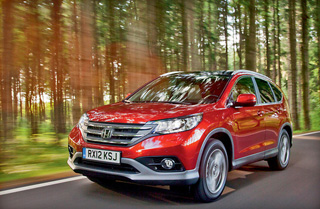Honda CR-V test drive since 2011 crossover
Asphalt all -terrain vehicle
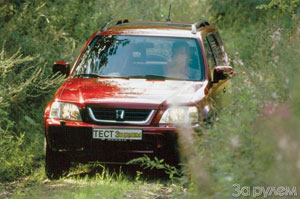 Let the jipers and street-players say, lose their landmords to their favorites: one on the asphalt, the other on the impassability! But, as the Arab proverb says, the caravan goes on and, if we talk about Honda CR-V, the caravan is not small.
Let the jipers and street-players say, lose their landmords to their favorites: one on the asphalt, the other on the impassability! But, as the Arab proverb says, the caravan goes on and, if we talk about Honda CR-V, the caravan is not small. Marketers fell to the point: most owners do not need a cool all -terrain vehicle with bridge locks and lowered transfers (for travels to the picnic is enough and enlarged clearance), but a good overview, comfort in a long trip and a roomy salon are expensive. In Russia, CR-V appeared in the fall of 1997, and the attack on the secondary market began three years later, with the end of the factory guarantee for the first cars sold. Today, the ranks of used cars are already replenishing the CR-V of the second generation (see the history of the model). But the prices for them in Moscow remain high more than 22 thousand dollars, but four-seven-year-old copies cost 1418 thousand. We will talk about them.
Geographical features
The demand for CR-V was so high that their production was established around the world: in addition to Japan in
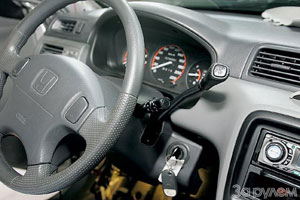 Great Britain, in the USA and Canada, in Thailand and the Philippines. Officially, Japanese assembly cars were delivered mainly to Russia, but at the end of 2000 and in 2001 there were separate parties of the British.
Great Britain, in the USA and Canada, in Thailand and the Philippines. Officially, Japanese assembly cars were delivered mainly to Russia, but at the end of 2000 and in 2001 there were separate parties of the British. The main stream of used cars from Germany. This is almost a Russian version. There are cars from the USA and Canada: as a rule, they are cheaper than Europeans. Firstly, due to lower prices for new cars (for the North American market, manufacturers fight with all their might), and secondly, because of a relatively poor configuration: many Americans do not have ABS, central castle, air conditioning and even complete drive. Therefore, before seduced by a low price, find ten differences. The right -handed cars are cheaper, but the spare parts for them will have to order many details of their own at their own peril and risk, and even dealers do not have a company program. Immediately take care of the European winter set will not work: the Japanese have four studs instead of five.
Before buying a car you attracted, it is worth visiting the dealer technical center, and not only for the sake of qualified diagnosis. Sometimes problems arise when registering in the traffic police, the structure of the CR-V VIN code has changed: for example, the year of release according to 1997, inclusive was indicated before the letter C and denoted in numbers 1 or 2, since 1997 it was encrypted with letters and put them after S.
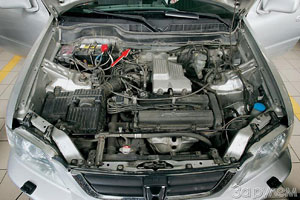 Belts and chains
Belts and chains The issue of choosing an engine before the buyer CR-V is not worth it. Before the 1999 restyling, all cars were equipped with the only 2-liter 128-horsepower V20V engine, then it gave way to the only 147-horsepower B20Z (engineers changed the intake and release settings, phase distribution and control program).
Even the weaker motor of Honda CR-V is more than enough. For its class, it is very dynamic and at the same time is distinguished by moderate appetite: with a manual gearbox, it spends 910 liters per hundred on the highway. But for the machine, it will have to pay extra at each gas station, it additionally eats up to 3 liters of fuel. However, the appetite can be modeled with a calm ride: adaptive automatic transmission adjusts the moments of switching to the driving style.
The series of the series in are traditionally reliable, afraid of only crazy pens, low -quality oils and a radiator clogged with fluff. Oil (every 10 thousand km) is more convenient to carry out on a lift or overpass: access to the filter only from below.
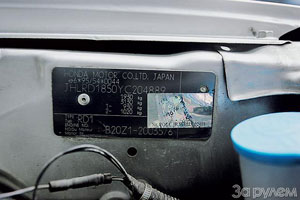 Once every 40 thousand km, antifreeze is updated and timing gaps are checked (usually they do not need adjustment, but you should not neglect the examination). The timing belt withstands the set 100 thousand km without problems. When replacing, be sure to inspect the pump and stretch video, and with the second belt it is better to change them in any case up to the fourth hundred thousand, the majority does not live, and the work is expensive.
Once every 40 thousand km, antifreeze is updated and timing gaps are checked (usually they do not need adjustment, but you should not neglect the examination). The timing belt withstands the set 100 thousand km without problems. When replacing, be sure to inspect the pump and stretch video, and with the second belt it is better to change them in any case up to the fourth hundred thousand, the majority does not live, and the work is expensive. On the 92nd gasoline, the spark plugs last up to 20 thousand km, but the AI-95 rich in iron-containing additives sometimes finishes them to the next TO. The B20V engine can be fed both, but more forced units digest low -octane fuel (recommended by O.Ch. at least 95) only paired with a machine gun. There is no detonation sensor here, and the initial angle of the ignition is regulated by the rotation of the distributor body, so in case of extreme need it can be moved to get away from detonation. But do not forget to return it to its place and remember that you need to adjust the advance with closed contacts of the service connector. However, during normal operation, this is practically not required.
Honda does not recommend protecting the motor compartment, so as not to violate its ventilation, and the engine and gearbox crankcases are located quite high.
Amateur athlete
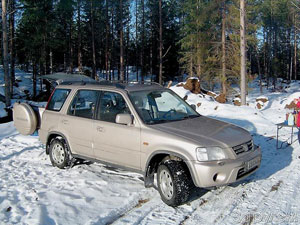 Although the 205 mm clearance allows not to be afraid of passenger obstacles, the CR-V Honda was not created for rally and trophi raids, so the rear bridge is connected here if necessary, with the difference in rotation of the front and rear wheels. The redistribution of the moment (up to 50% on the rear axle) is controlled by automation, and only a gearbox and a gas pedal remains the driver. To leave the snowdrift or overcome the slippery rise is enough. With uniform movement without slipping CR-V, the front-wheel drive car, obedient and economical. A magnificently configured independent suspension of all wheels allows you to pass at high speed. But do not bring the matter to the sliding, the connected rear bridge sharply changes the nature of the behavior of the car, and then the high center of gravity to keep the swimming CR-V in a slippery turn, an unprepared driver can hardly be possible, so not to drive the advice.
Although the 205 mm clearance allows not to be afraid of passenger obstacles, the CR-V Honda was not created for rally and trophi raids, so the rear bridge is connected here if necessary, with the difference in rotation of the front and rear wheels. The redistribution of the moment (up to 50% on the rear axle) is controlled by automation, and only a gearbox and a gas pedal remains the driver. To leave the snowdrift or overcome the slippery rise is enough. With uniform movement without slipping CR-V, the front-wheel drive car, obedient and economical. A magnificently configured independent suspension of all wheels allows you to pass at high speed. But do not bring the matter to the sliding, the connected rear bridge sharply changes the nature of the behavior of the car, and then the high center of gravity to keep the swimming CR-V in a slippery turn, an unprepared driver can hardly be possible, so not to drive the advice. The mechanical gearbox without problems serves more than 200 thousand km, just do not forget to update the oil (MTF) every 40 thousand. The clutch with hydraulic drive withstands an average of more than 150 thousand km. Many are inconveniently inconvenient for the large pedal, it can be reduced by adjustment. A very well-tuned CR-V machine does not require investments to at least 150 thousand km, provided that the oil change (ATF) is regularly changed. In Russia, it is better to do this more often not after 60, but after 40 thousand km.
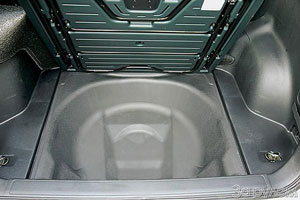 Regular races for a while finish the clutches, but after replacing them, the box works like a new one: bearings and gears practically do not wear out. By the way, Honda machines are made according to the mechanical boxes with parallel shafts, so it is much easier to repair than planetary ones.
Regular races for a while finish the clutches, but after replacing them, the box works like a new one: bearings and gears practically do not wear out. By the way, Honda machines are made according to the mechanical boxes with parallel shafts, so it is much easier to repair than planetary ones. But the cardan transfer is a significant cost item. Crosses begin to tap after 120150 thousand km of run, with the automatic transmission noticeably later (less shock loads in the transmission). With the repair, you can wait for some time, copying money for a new shaft is supposed to be changed only in the collection. The replacement of the crosses in garage conditions is suitable only for young ladies who are in a hurry to sell a problematic car that a prepared cardan does not go for a long time.
You can forget about the existence of CV joints: if you have not broken the case, serve them until the end of the century. The bearings of the hubs are less durable, but 100120 thousand are kept with honor; The further forecast depends on the number of pits and the loading of the trunk.
The brakes are unlimited with regular care: cleaning and lubrication of guides and replacing brake fluid every three years. The pads of the rear drum brakes serve 80100 thousand km, but wear out unequally: the front are faster, the rear ones are slower. Temporarily, you can simply change them (of course, if the moment of critical wear was not missed). But after a maximum of 40 thousand km, you will have to go broke on new ones, otherwise the thinned overlage will bounce and jam the wheel. The emerging wheelchass on braking is usually caused by the formation of a layer of scale on the surface of the disk (when the car stood with wet pads for a long time). It is not found to extend the life of the front discs, and such a defect as warping of disks from overheating is not found here.
CR-V body is not very afraid of corrosion. All lower panels with double galvanizing, and small traces of rust near the rear door product of steel goals corrosion in the mounting of the branded nameplate.
The history of the model
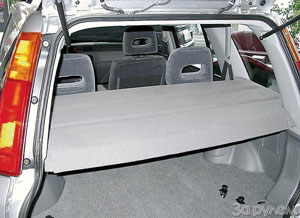 1995. The Honda CR-V is a five-door station wagon. The engine is gasoline, p4, sixteen -valve B20V, 2.0 l, 94 kW/128 hp. Front or complete (automatic connection of the rear axle). Gearbox M5 or A4.
1995. The Honda CR-V is a five-door station wagon. The engine is gasoline, p4, sixteen -valve B20V, 2.0 l, 94 kW/128 hp. Front or complete (automatic connection of the rear axle). Gearbox M5 or A4. 1996. The beginning of the production of CR-V for the Japanese market.
1997. Deliveries to Europe and to Russia.
1999. Restyling. Fainted bumpers, wide moldings on the doors, a cover on a spare wheel and fog lights appeared. The front seats received more developed side support, and the buttons are backlight. The B20V engine gave way to the same volume and layout, but increased power of 108 kW/147 hp.
2002. The second generation CR-V. Updated the exterior and interior. In addition to frontal airbags, side pillows and curtains appeared. A new front and rear suspension scheme. New engines with I-VTEC and VTC and IMRC* gasoline, P4, sixteen-valve: K20 2.0 l, 110 kW/150 hp, K24 2.4 l, 118 kW/160 hp.
2005 year. Restyling. Electronic equipment, active and passive safety has improved. A turbodiesel engine 2.2 liters, 103 kW/140 hp. (It is not officially supplied to Russia).
*The I-VTEC system allows you to vary the duration of the opening and the height of the intake and exhaust valves depending on the operating mode of the engine. The VTC system allows you to shift the phases of gas distribution by turning the camshaft. The IMRC system regulates the length of the intake path.
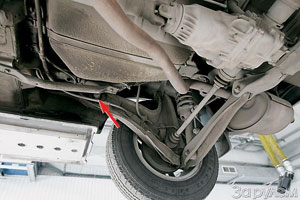
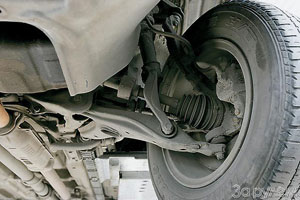
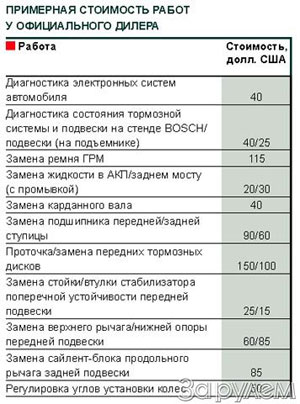
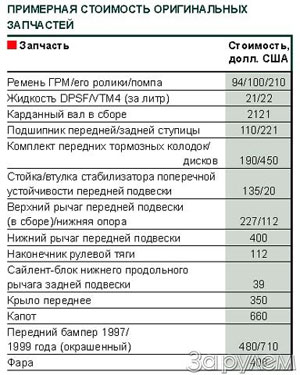
Anatoly Sukhov
Source: The magazine "Driving"














